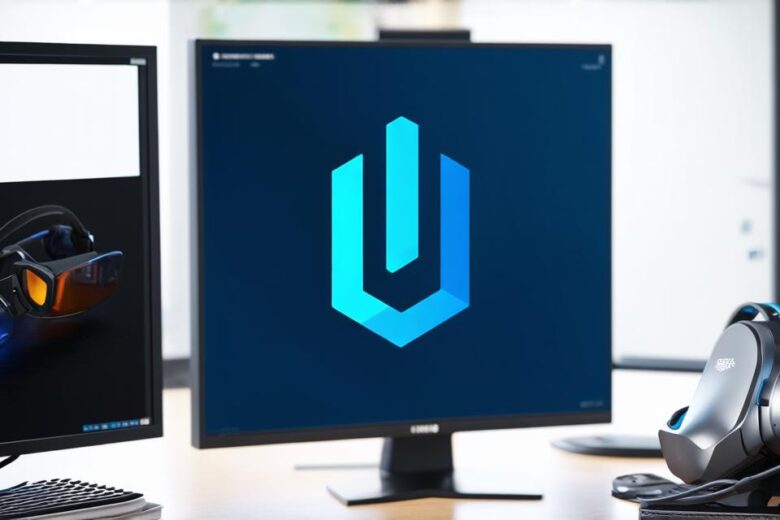Unreal Engine is one of the most popular game engines used by developers worldwide. With its extensive range of tools and features, it offers an accessible and powerful platform for creating engaging and immersive games. In this tutorial, we will guide you through the process of developing a game using Unreal Engine, from setting up your development environment to publishing your game on various platforms.
Prerequisites
Before diving into the world of game development with Unreal Engine, let’s ensure that you have everything you need to get started. Here are the minimum requirements:
A computer with at least 4GB of RAM and a dual-core processor (Intel Core i5 or AMD FX 6300).
NVIDIA GeForce GTX 960 or AMD Radeon R9 280 graphics card.
Unreal Engine installation and license.
Setting Up Your Development Environment
The first step in developing a game with Unreal Engine is to set up your development environment. Here’s how:
- Download and install Unreal Engine from the official website (https://www.unrealengine.com/en-US/download).
- Once installed, open Unreal Engine and create a new project by clicking on "Create a Project."

- Choose your game type, such as 2D, 3D, or Virtual Reality. This will determine which tools and features are available to you in the engine.
- Name your project and select the location where you want to save it. It’s recommended to create a dedicated folder for your projects to keep them organized.
- Click "Create Project" to start your development environment.
Creating Your Game World
Now that you have your development environment set up, let’s start creating your game world. Here are the steps:
- Open your project in Unreal Engine and navigate to the "World Composition" tab. This tab contains various tools for creating and managing the composition of your game world.
- Click on "Add New Mesh" and select the type of mesh you want to use (e.g., plane, cube, sphere). You can also create custom meshes by importing 3D models or using the built-in sculpting tools.
- Once you have added your mesh, you can move, rotate, and scale it using the transformation tools in the toolbar. These tools include translate, rotate, and scale, as well as various selection and manipulation options.
- Add lighting to your scene by clicking on "Lighting" in the main menu and selecting the type of light you want (e.g., directional, point, spot). Lighting can significantly affect the mood and atmosphere of your game world, so it’s important to pay attention to this step.
- To add materials to your mesh, click on "Materials" in the main menu and select "Add New Material." Materials define the appearance of objects in your game world, including their color, texture, and reflectivity.
- Experiment with different materials and lighting settings to create the desired look and feel for your game world.
Programming Your Game
Unreal Engine uses a powerful visual scripting system called Blueprints, which allows you to create complex game logic without writing any code. Here are the steps to get started with programming in Unreal Engine:
- Open the "Graph Editor" window by clicking on "Window" in the main menu and selecting "Graph Editor." This window contains various nodes that represent different functions and operations.
- Create a new blueprint class by right-clicking in the graph editor and selecting "Create New Class." Blueprints are reusable classes that contain predefined functions and properties.
- Drag and drop nodes from the graph editor onto your blueprint canvas to create a flowchart of your game logic. There are various categories of nodes, including control flow, logic, math, and user interface.
- Connect nodes using wires to define the flow of data and execute the desired operations. You can also use variables and constants to store and manipulate data in your blueprint.
- Test your blueprint by running it in the game editor. Unreal Engine provides a built-in game editor that allows you to preview and test your game without leaving the engine.
- Refine and debug your blueprint as needed to achieve the desired behavior.
Debugging Your Game
As with any software development project, debugging is an essential part of game development. Unreal Engine provides various tools for debugging your game, including:
- The "Console" window, which displays error messages and other diagnostic information.
- The "Profiler" tool, which analyzes performance metrics such as frame rate, memory usage, and CPU utilization.
- The "Debugger" tool, which allows you to step through your code line by line and inspect variables and data types.
- The "Visual Debugger," which provides a graphical representation of your game objects and their relationships.
By using these tools, you can identify and fix issues in your game logic, optimize performance, and ensure that your game runs smoothly on all platforms.Publishing Your Game
Once you have developed and debugged your game, it’s time to publish it on various platforms. Unreal Engine supports a range of platforms, including Windows, macOS, consoles, and mobile devices. Here are the steps to publish your game:
- Go to the "Publishing" tab in the main menu. This tab contains various options for configuring and publishing your game.
- Select the platform you want to publish your game on (e.g., Windows Store, Steam). Each platform has its own requirements and guidelines, so it’s important to familiarize yourself with them before submitting your game.
- Follow the prompts to configure your game for publication, including setting up metadata and pricing. Metadata includes information such as the game title, description, screenshots, and keywords, while pricing determines how much users will pay to download or purchase your game.
- Upload your game files to the platform’s server. Unreal Engine automatically generates optimized versions of your game files for each platform, so you don’t need to worry about creating different builds for each one.
- Wait for the review process to complete. This can take anywhere from a few days to several weeks depending on the platform and the complexity of your game. During this time, you may be asked to provide additional information or make changes to your game based on feedback from the platform’s review team.
- Once your game is approved, it will be available for download by users. You can promote your game through various channels, including social media, gaming forums, and app stores, to reach a wider audience.
Summary
Developing games with Unreal Engine is an exciting and rewarding experience that requires creativity, technical skills, and attention to detail. With this tutorial, you have learned the basics of setting up your development environment, creating your game world, programming your game, debugging your game, and publishing your game. By following these steps and continuing to learn and experiment, you can create amazing games
